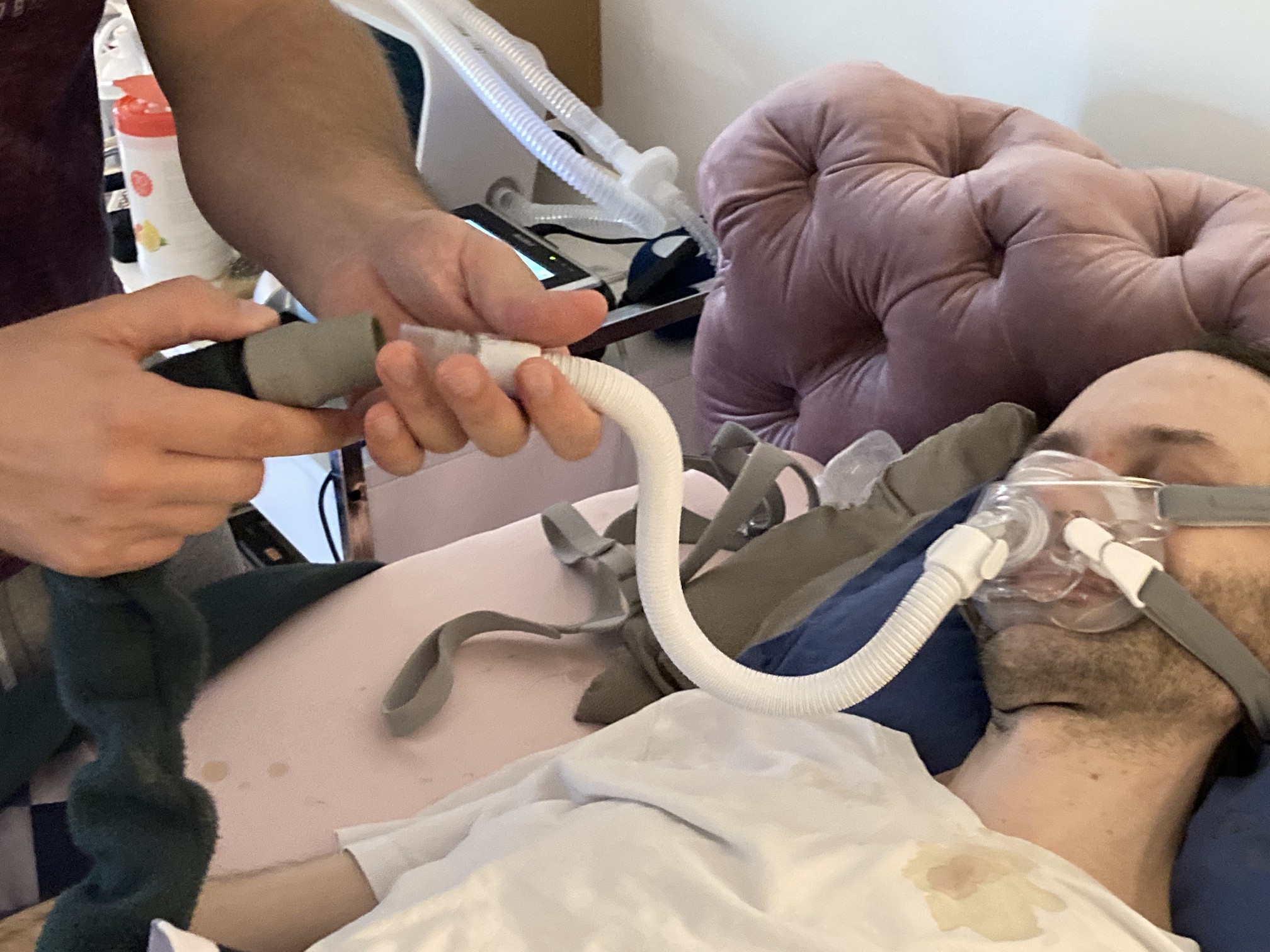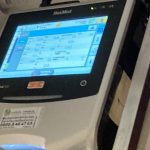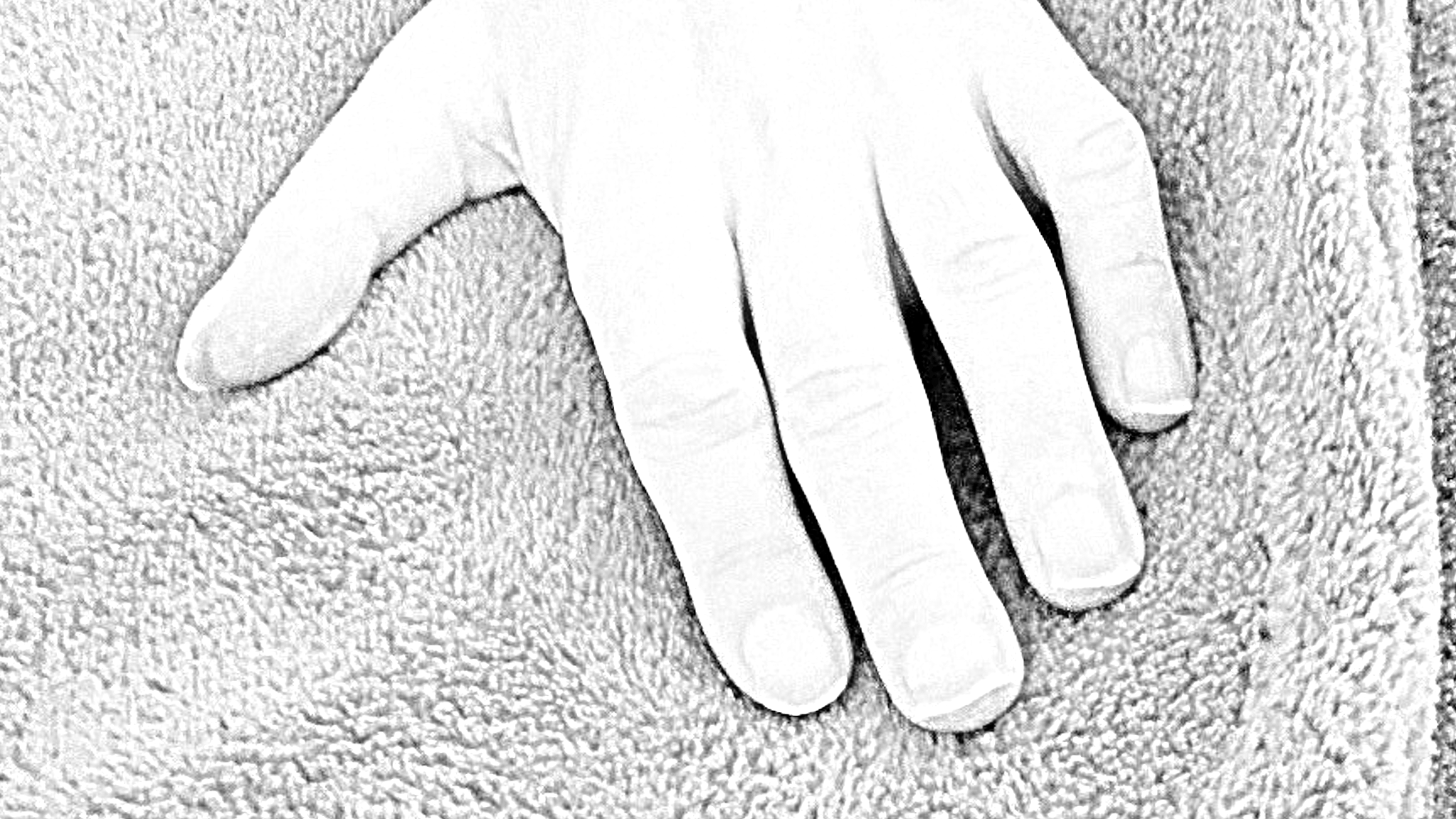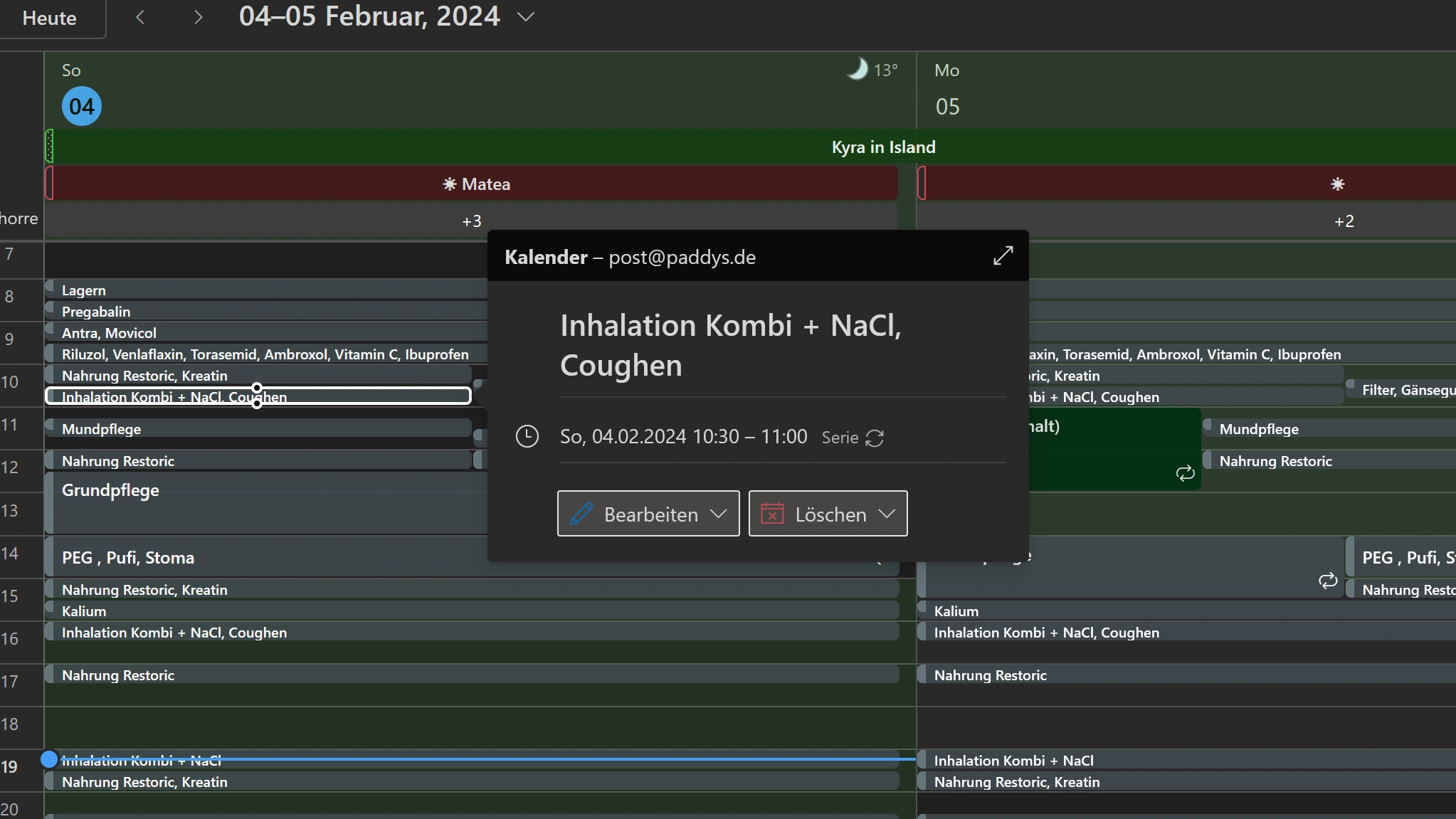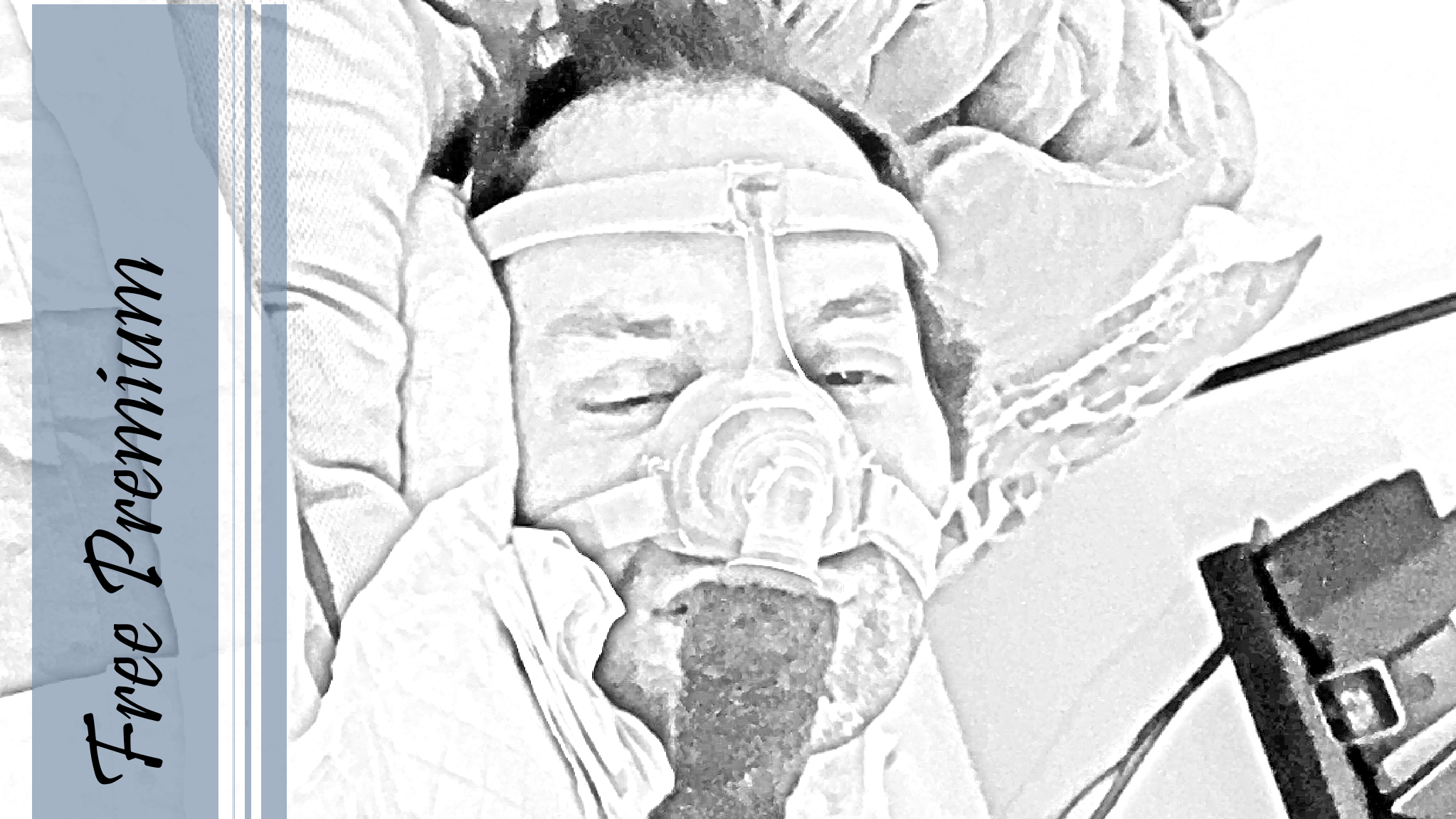Let's start with one of my most important tools. It is also the tool that gets the most wrong, because no one explains it properly and everyone seems to think it will work somehow. From experience with over 40 intensive care workers (or supposed intensive care workers) I can assure you that it is a dangerous fallacy. Which is pretty stupid, because I absolutely need that mask for restful sleep and inhalation. Unfortunately, I can't do without it, even though I prefer the nasal mask a hundred times over.
The most important basic rules when putting on the nose-and-mouth mask:
- The upper straps are adjusted correctly. If the mask does not fit, it has been put on incorrectly. Please never (!) change the top Velcro straps unless I specifically ask you to. One of the few things where I can get really grumpy.
- The nose doesn't fucking come in the hole. I need the hole to breathe.
- The nose is on top of the mask. The nose is free at the top and is not covered by the mask. In other words, the upper surface of the wet does not touch the nose.
- Every mask is always placed on the nose first, or in this case on the mouth and nose, and only then are the straps taken care of, not the other way round. First of all, everything would otherwise be crooked and crooked, and secondly, the patient would not be able to breathe. All the straps on all masks are head straps and not neck straps. The neck remains free. If you pulled the straps down to the neck, I would have trouble breathing, I would hardly be able to open my mouth, I would not be able to swallow and I would not be able to set off a leakage alarm.
- Your employer has received masks from me to practise on. Use the chance. Practice on your colleagues and please - seriously - also practice on yourself to get a feeling for how the mask fits properly.
Now that I've been grumbling again - which is what I'm known for - I'll insert some highly factual explanations for a change. The final result should look like this (thanks in advance for the manufacturer's kind permission to quote content):

- The eyes are exposed.
- The lower bands run along the cheek and do not touch the neck.
- The mask hugs the nose from below, the rest of the nose is free.
- The neck does not touch the mask at any point. Neither do the straps. As I said, they are headbands, not neckbands.
- Wearing glasses is no problem with the nose-to-mouth mask, as shown in the photo.

